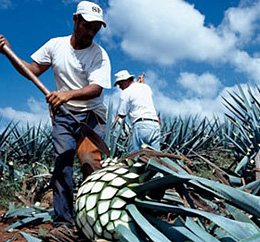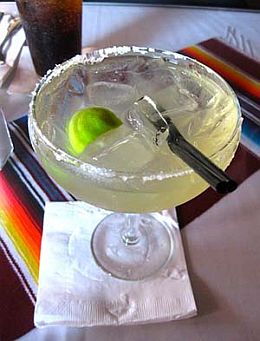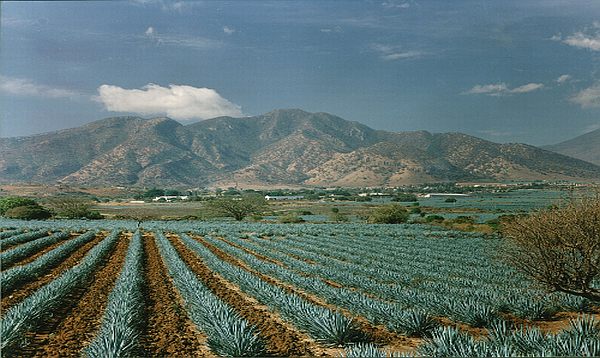Jalisco, Mexico - For tequila drinkers who like their shots dressed and their margaritas limey, a lime shortage could be an aggravating setback. But a shortage of tequila that would drive the cost per bottle through the roof? That's no bueno.
Reuters reported last week that Mexican farmers who grow Agave tequilana, more commonly known as blue agave, don't have enough supply to keep up with the worldwide demand of tequila. Agave tequilana is a blue-tinged, spikey-leaved plant that's the main ingredient in tequila production.
 |
The shortage has been a problem spiraling downward. See, the plants are put into the ground, and they take usually 6-7 years to mature. But when the shortage began, farmers in Mexico's western state of Jalisco started pulling plants that weren't ready for the process of going from ground to bottle to margarita glass.
"They are using four-year-old plants because there aren't any others. I can guarantee it because I have sold them," said Marco Polo Magdaleno, a worried grower in Guanajuato, one of the states allowed to produce tequila according to strict denomination of origin rules.
The industry needs to supply 42 million agaves to 140 registered companies, according to figures from the Tequila Regulatory Council (CRT) and the National Tequila Industry Chamber (CNIT). However, only 17.7 million blue agaves were planted in 2011 in Mexico for use this year, falling well short of the demand. Here's the breakdown of how the price has gone up so quick so fast:
2016 price — 3.85 peso per kilo
2017 (end of year) — 22 pesos ($1.18)
($1 = 18.7096 Mexican pesos)
So for the producers of the cheapest tequila (think bottom row, plastic bottle in a liquor store), this makes it harder to compete with the top-of-the line producers.
 |
And it's not just premium tequila distillers that'll drive them nearly out of business, but drinkers switching to liquors like vodka, rum and whiskey could also play a part.
"At more than 20 pesos per kilo, it's impossible to compete with other spirits like vodka and whisky," said Salvador Rosales, manager of smaller producer Tequila Cascahuin, in El Arenal, a rural town in Jalisco. "If we continue like this a lot of companies will disappear."
Patron, Tequila Sauza and other top sellers said the shortage hasn't affected them being able to pay, and that the future looks bright for such companies.
"If you sell value, the costs don't worry you," said Francisco Soltero, director of strategic planning at Patron, which buys agave under various contracts.
Tequila Sauza grows its own agave for the most part, and they don't predict any supply problems, chief executive Servando Calderón said. However, some believe it's only a matter of time before the rising production costs and smaller supply affects the demands of the big-name players.
"We are sure this will have a strong impact on the big firms such as Cuervo or Sauza," said Raul Garcia, President of the National Committee for Agave Production in Tequila, a group that includes most agave producers in the country. "We don't see that the problem will be resolved soon, and that's what worries us."
Then there's the use of agave plants for other products like health supplement insulin and agave syrup and other agave-driven products. And to add more to the problem, there's theft in the industry. According to the Tequila Regulatory Council last year 15,000 plants were reported stolen, more than triple what was swiped in 2016.
Original article


